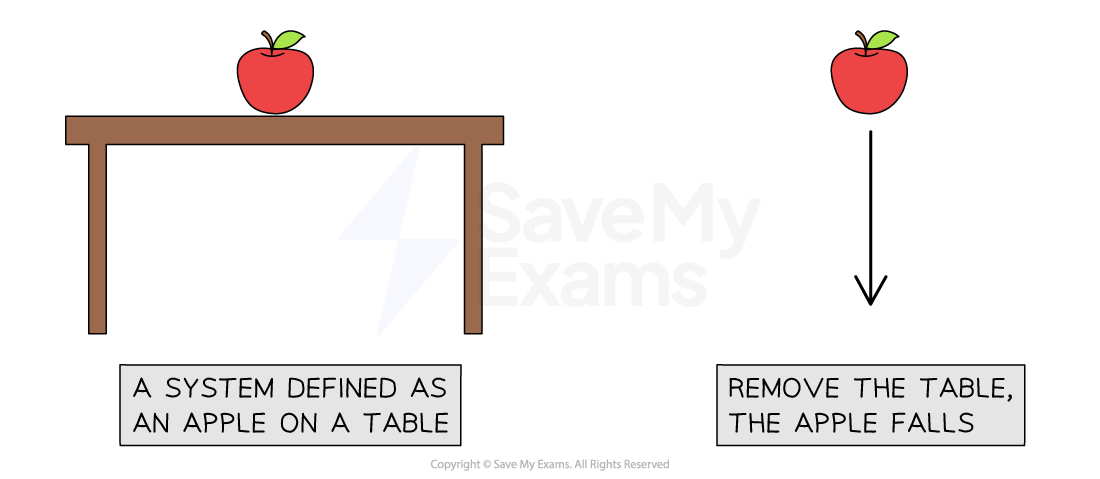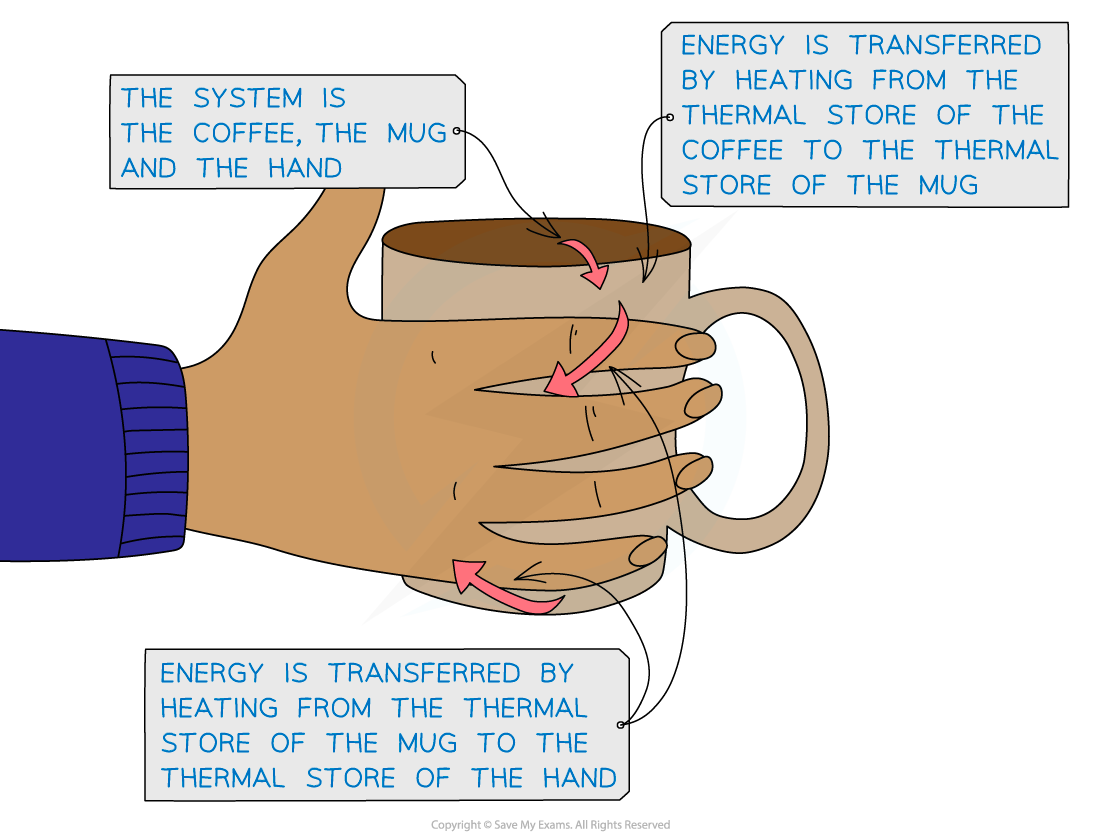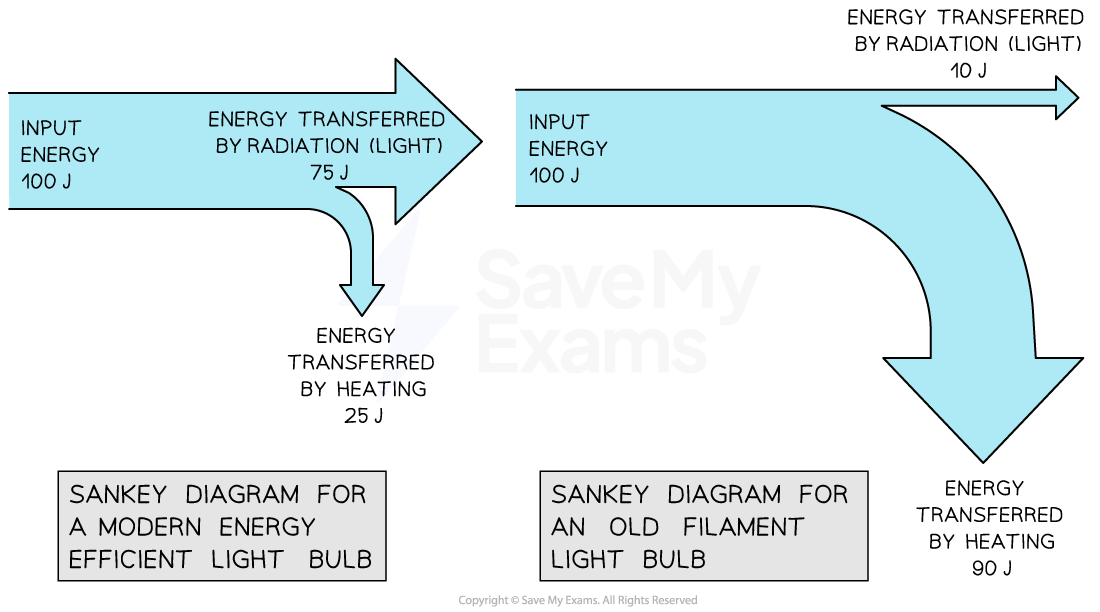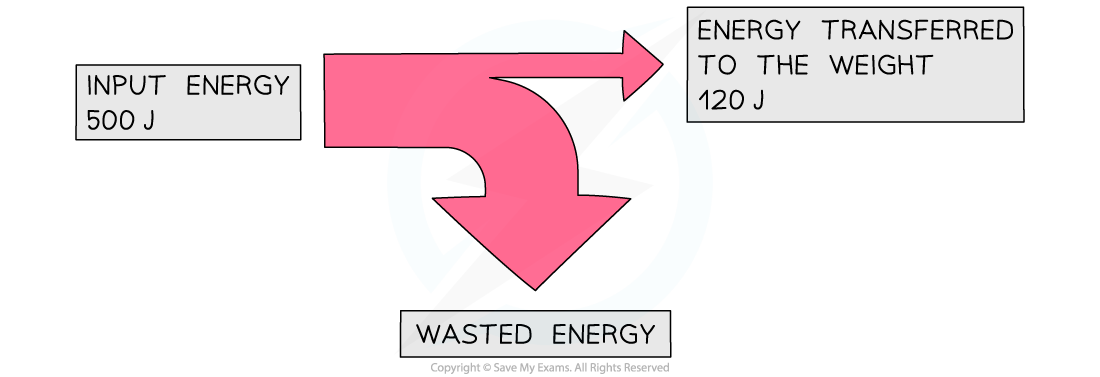Energy Stores & Transfers (OCR GCSE Combined Science A (Gateway)): Revision Note
Exam code: J250
Energy Stores & Transfers
Energy Stores
In physics, a system is defined as:
An object or group of objects
Defining the system, in physics, is a way of narrowing the parameters to focus only on what is relevant to the situation being observed
A system could be large or small, incorporating just one object, or a whole group of objects and their surroundings
When a system is in equilibrium, nothing changes, and so nothing happens
When there is a change to a system, energy is transferred
If an apple sits on a table, and that table is suddenly removed, the apple will fall
As the apple falls, energy is transferred

Energy is stored in objects in different energy stores
Energy Stores Table

Energy Transfers
Energy is transferred between stores by different energy transfer pathways
The energy transfer pathways are:
Mechanical
Electrical
Heating
Radiation
These are described in the table below:
Energy Transfer Pathways Table

An example of an energy transfer by heating is a hot coffee heating up cold hands

Energy is transferred by heating from the hot coffee to the mug to the cold hands
Worked Example
Describe the energy transfers in the following scenarios:
a) A battery powering a torch
b) A falling object
Answer:
a)
Step 1: Determine the store that energy is being transferred away from, within the parameters described by the defined system
For a battery powering a torch
The system is defined as the energy transfer from the battery to the torch, so this is the transfer to focus on
Therefore, the energy began in the chemical store of the cells of the battery
Step 2: Determine the store that energy is transferred to, within the parameters described by the defined system
When the circuit is closed, the bulb lights up
Therefore, energy is transferred to the thermal store of the bulb
Energy is then transferred from the bulb to the surroundings, but this is not described in the parameters of the system
Step 3: Determine the transfer pathway
Energy is transferred by the flow of charge around the circuit
Therefore, the transfer pathway is electrical
Energy is transferred electrically from the chemical store of the battery to the thermal store of the bulb
b)
Step 1: Determine the store that energy is being transferred away from, within the parameters described by the defined system
For a falling object
In order to fall, the object must have been raised to a height
Therefore, it began with energy in its gravitational potential store
Step 2: Determine the store that energy is transferred to, within the parameters described by the defined system
As the object falls, it is moving
Therefore, energy is being transferred to its kinetic store
Step 3: Determine the transfer pathway
For an object to fall, a resultant force must be acting on it, and that force is weight, and it acts over a distance (the height of the fall)
Therefore, the transfer pathway is mechanical
Energy is transferred from the gravitational store to the kinetic store of the object via a mechanical transfer pathway
Examiner Tips and Tricks
Don't worry too much about the parameters of the system. They are there to help you keep your answers concise so you don't end up wasting time in your exam.
If you follow any process back far enough, you would get many energy transfers taking place. For example, an electric kettle heating water. The relevant energy transfer is from the thermal store of the kettle to the thermal store of the water, with some energy dissipated to the surroundings. But you could take it all the way back to how the electricity was generated in the first place. This is beyond the scope of the question. Defining the system gives you a starting point and a stopping point for the energy transfers you need to consider.
Sankey diagrams can be used to represent energy transfers
Sankey diagrams are characterised by the splitting arrows that show the proportions of the energy transfers taking place
The different parts of the arrow in a Sankey diagram represent the different energy transfers:
The left-hand side of the arrow (the flat end) represents the energy transferred into the system
The straight arrow pointing to the right represents the energy that ends up in the desired store; this is the useful energy output
The arrows that bend away represent the wasted energy

Total energy in, wasted energy and useful energy out shown on a Sankey diagram
The width of each arrow is proportional to the amount of energy being transferred
As a result of the conversation of energy:
Total energy in = Useful energy out + Wasted energy
A Sankey diagram for a modern efficient light bulb will look very different from that for an old filament light bulb
A more efficient light bulb has less wasted energy
This is shown by the smaller arrow downwards representing the heat energy

Sankey diagram for modern vs. old filament light bulb
Worked Example
An electric motor is used to lift a weight. The diagram represents the energy transfers in the motor.

Calculate the amount of wasted energy.
Answer:
Step 1: State the conservation of energy
Energy cannot be created or destroyed, it can only be transferred from one store to another
This means that:
total energy in = useful energy out + wasted energy out
Step 2: Rearrange the equation for the wasted energy
wasted energy = total energy in – useful energy out
Step 3: Substitute the values from the diagram
500 – 120 = 380 J

Unlock more, it's free!
Did this page help you?